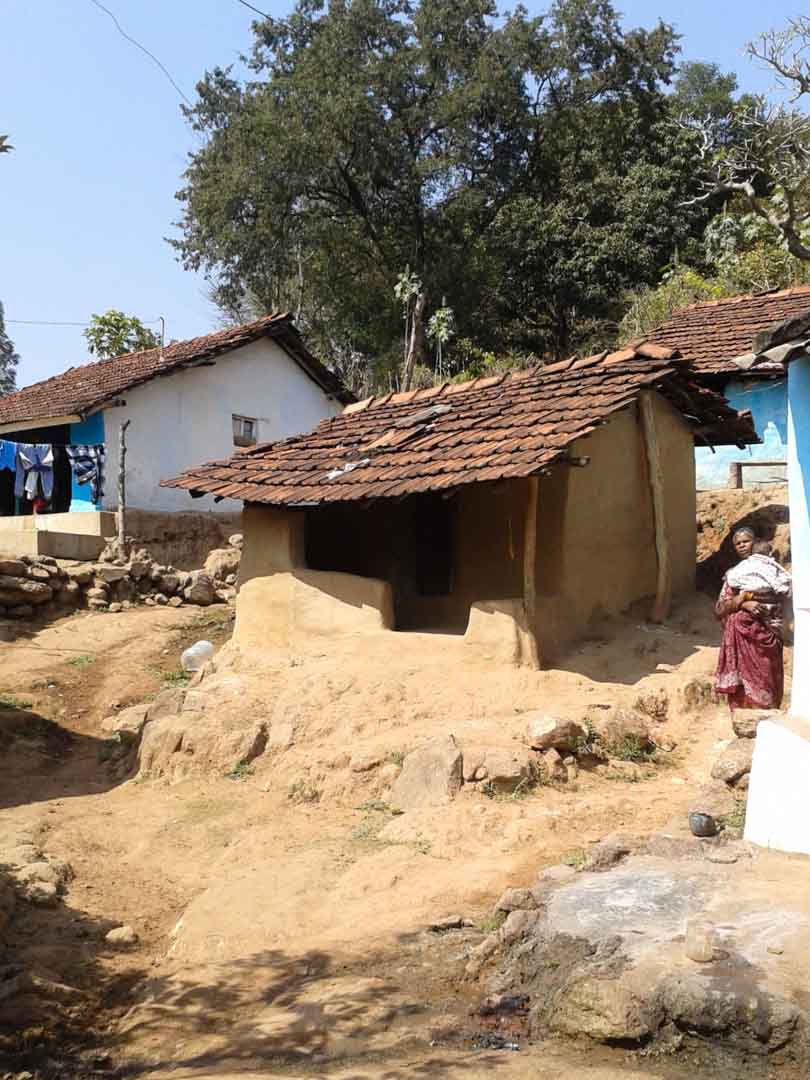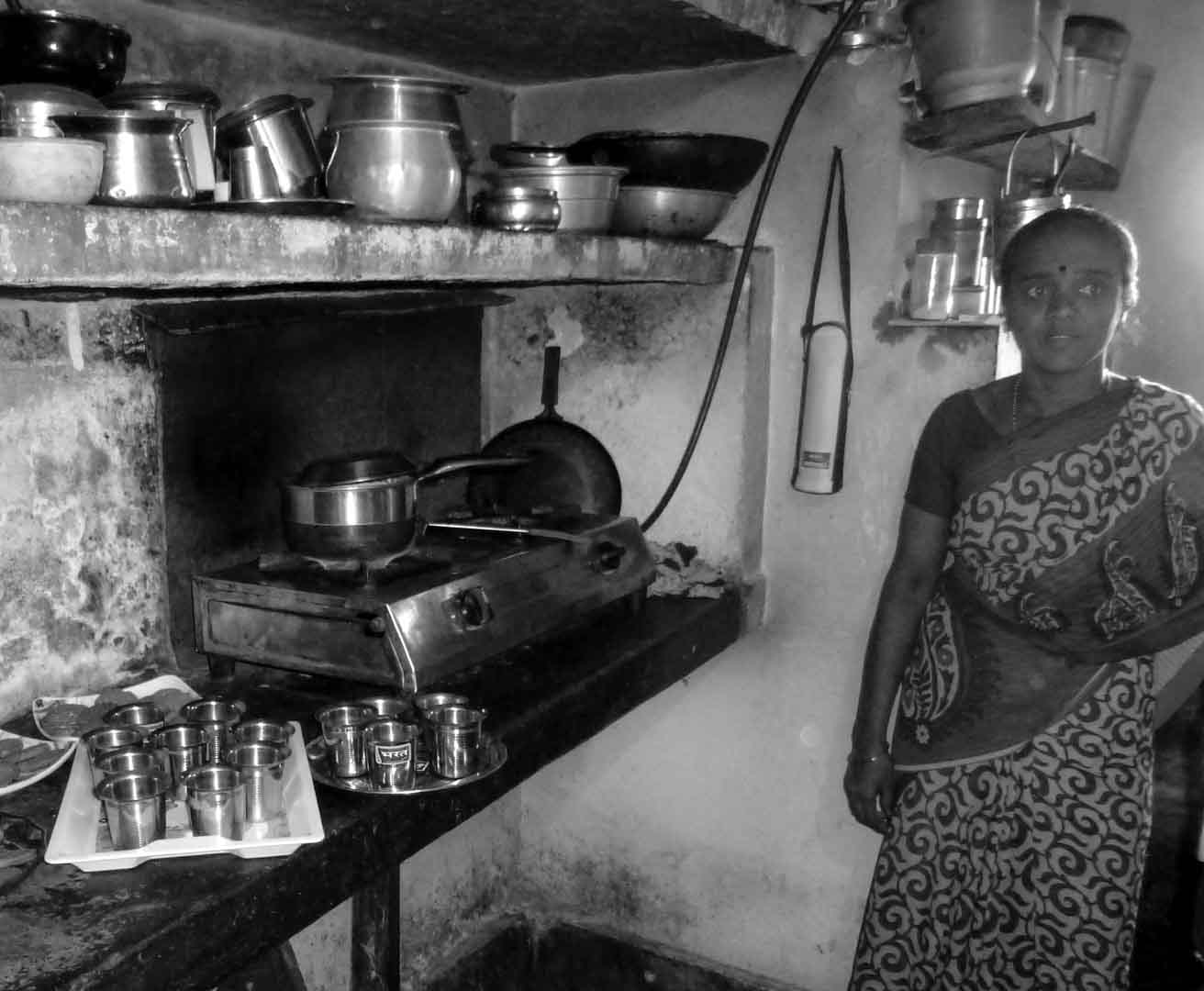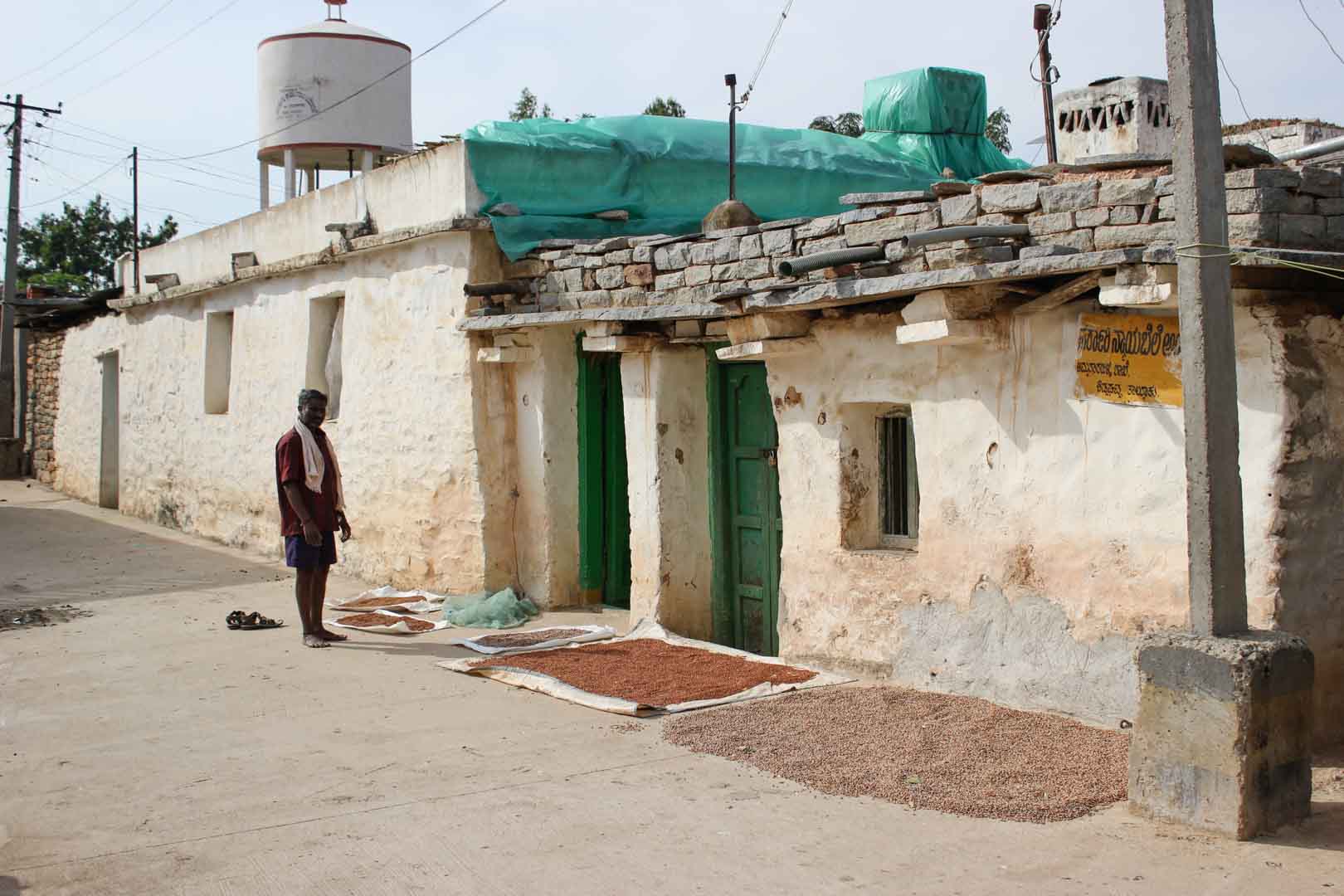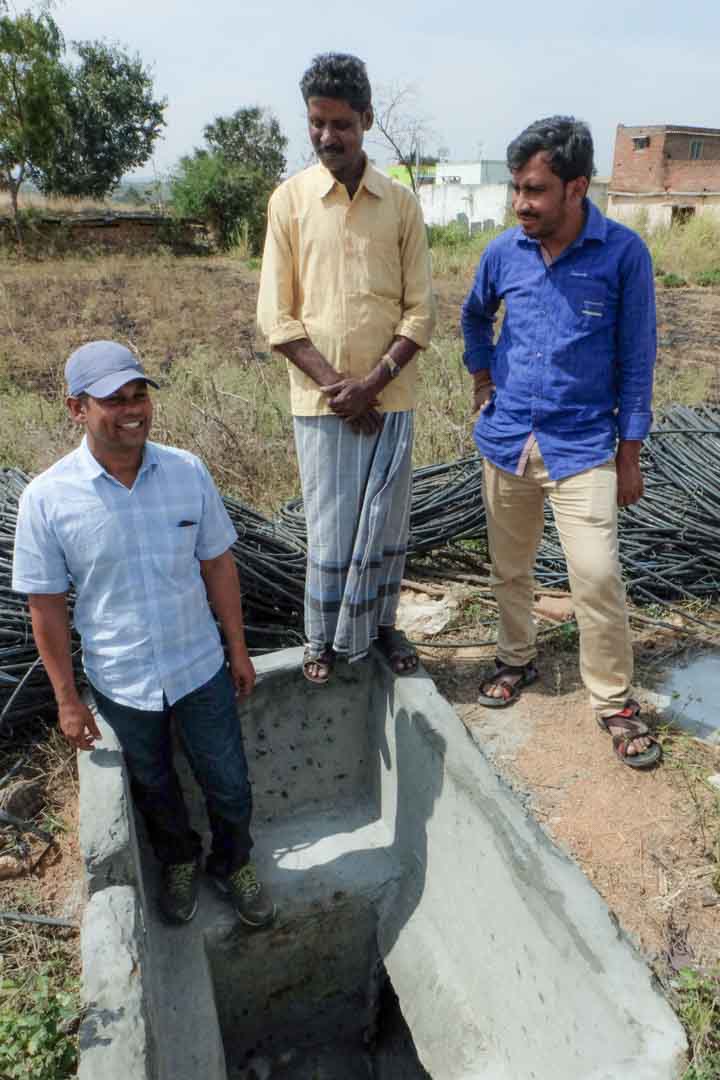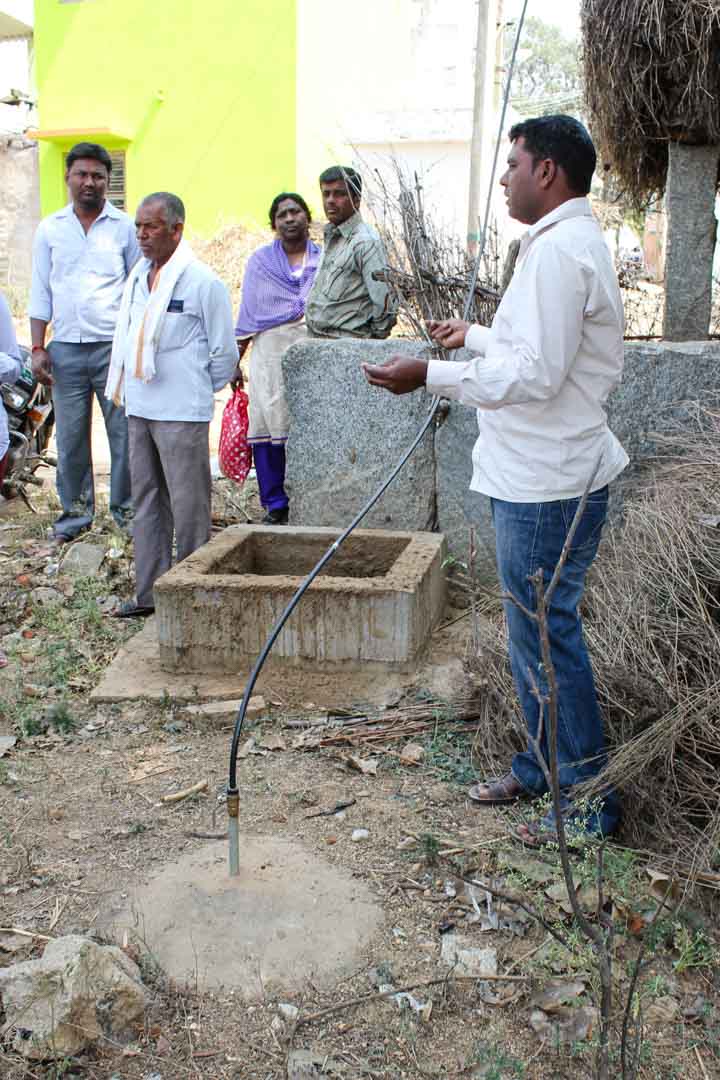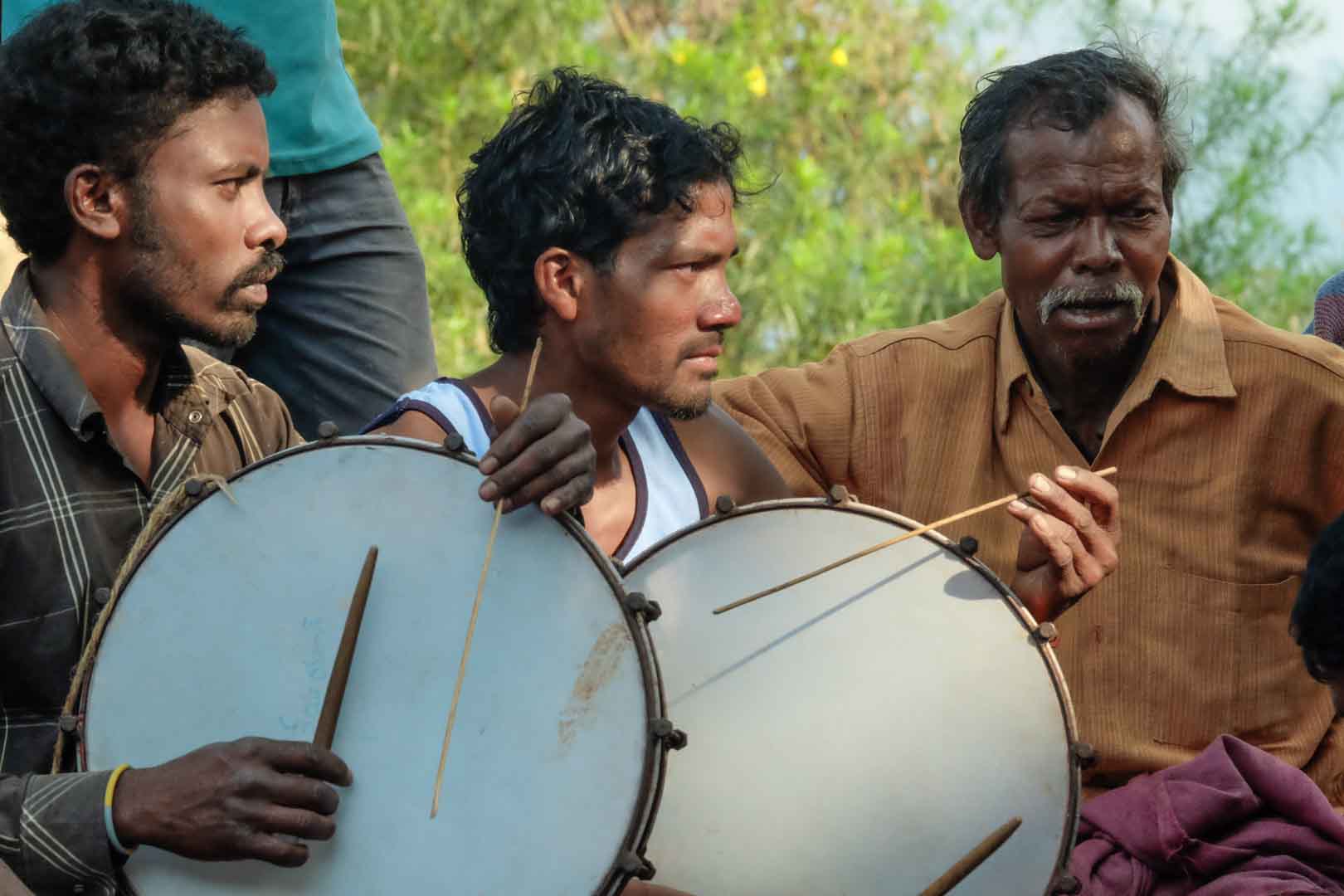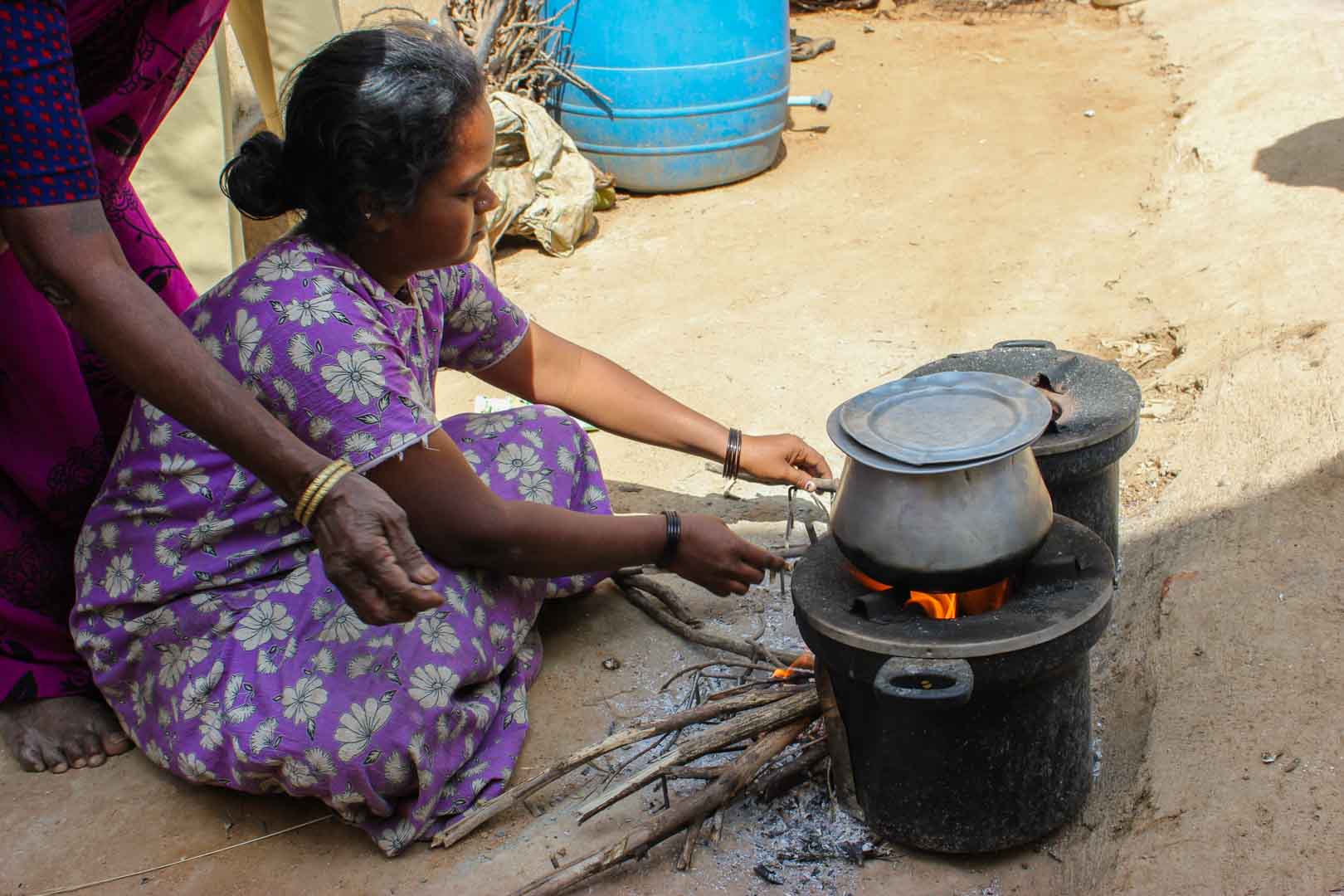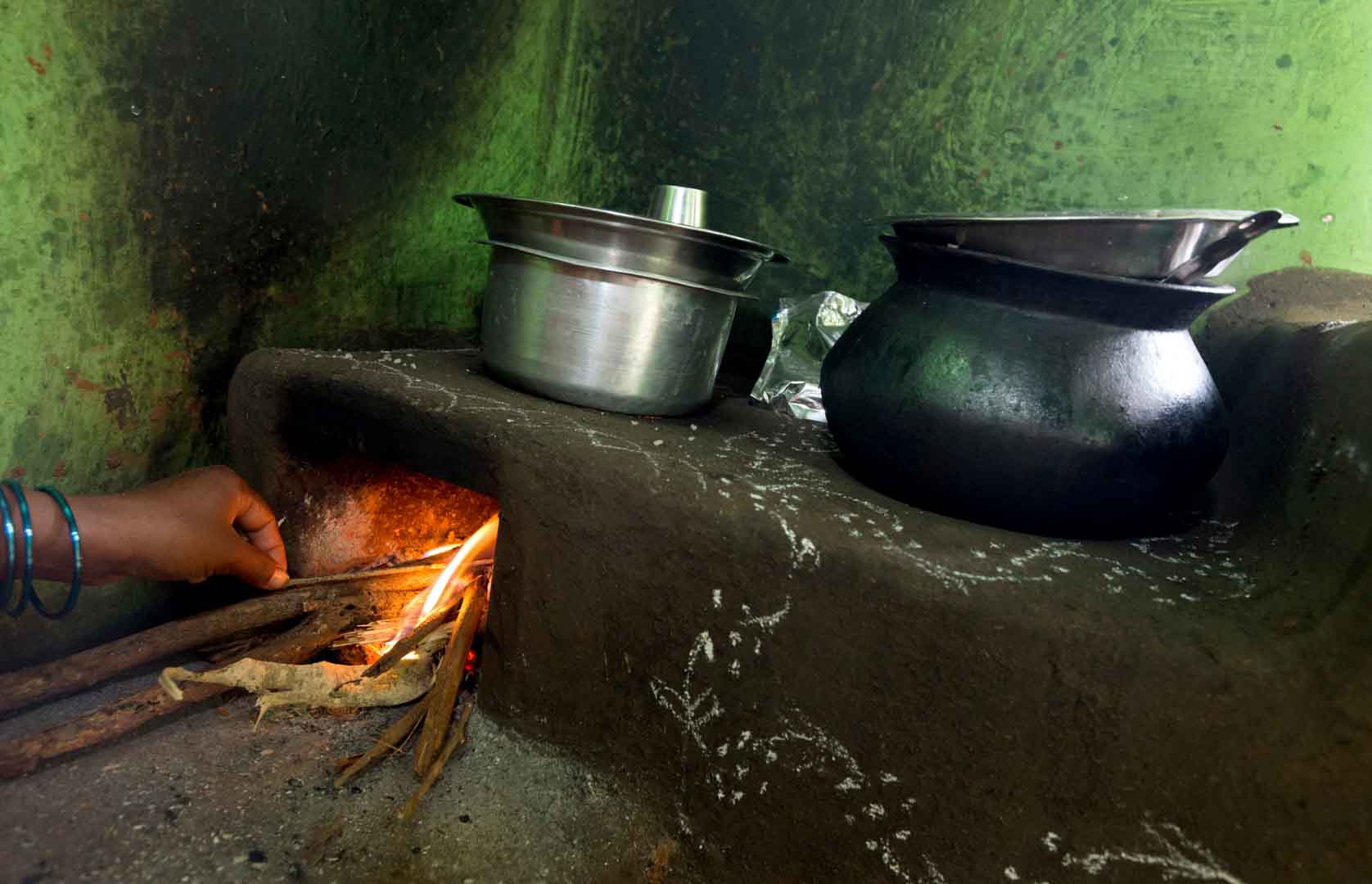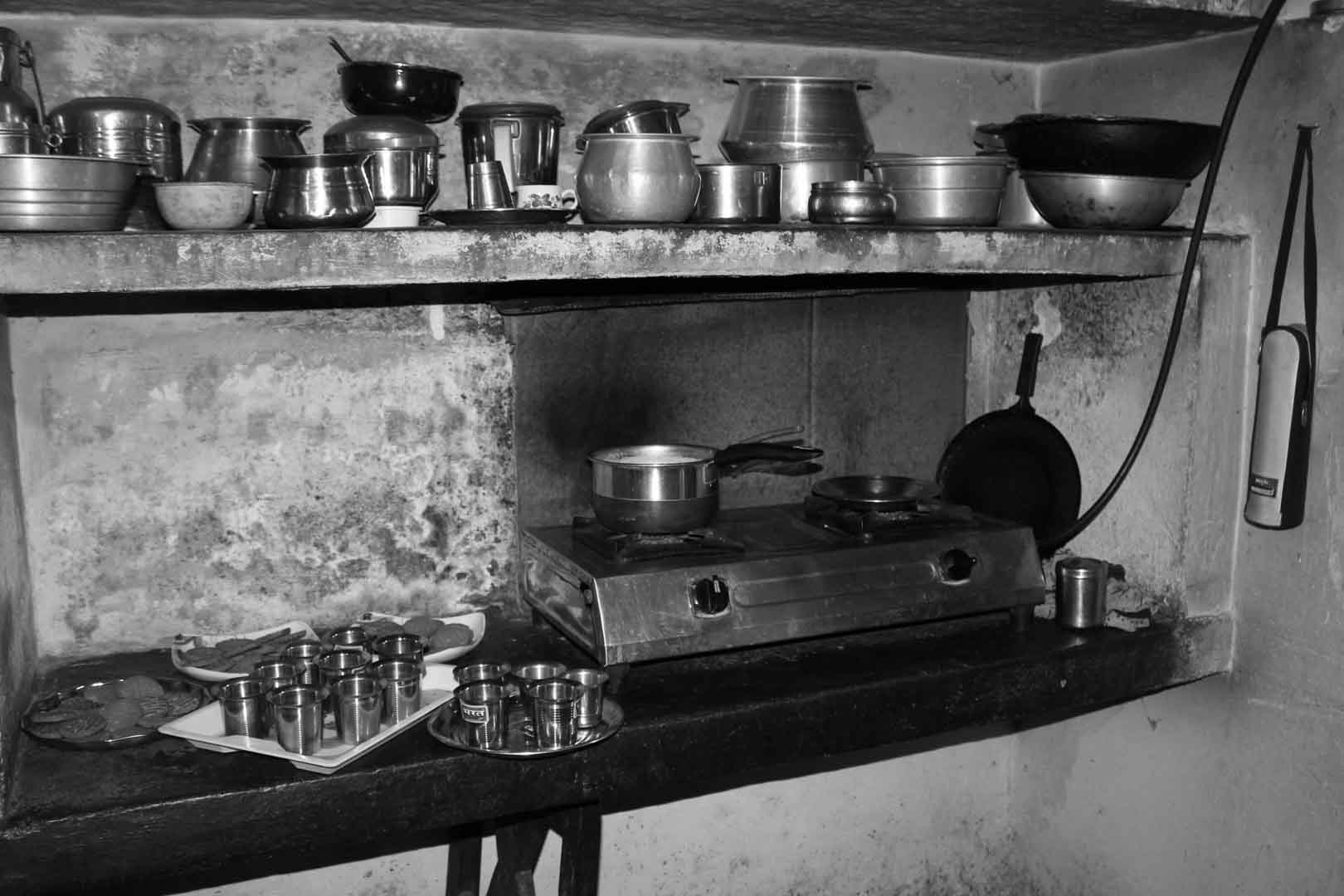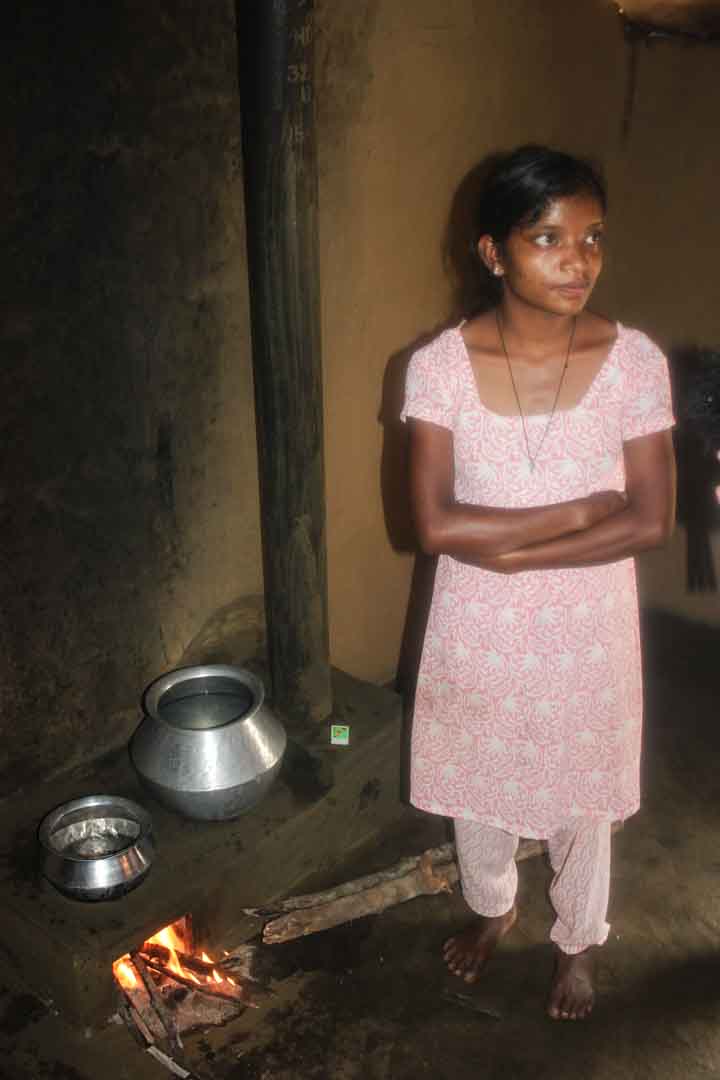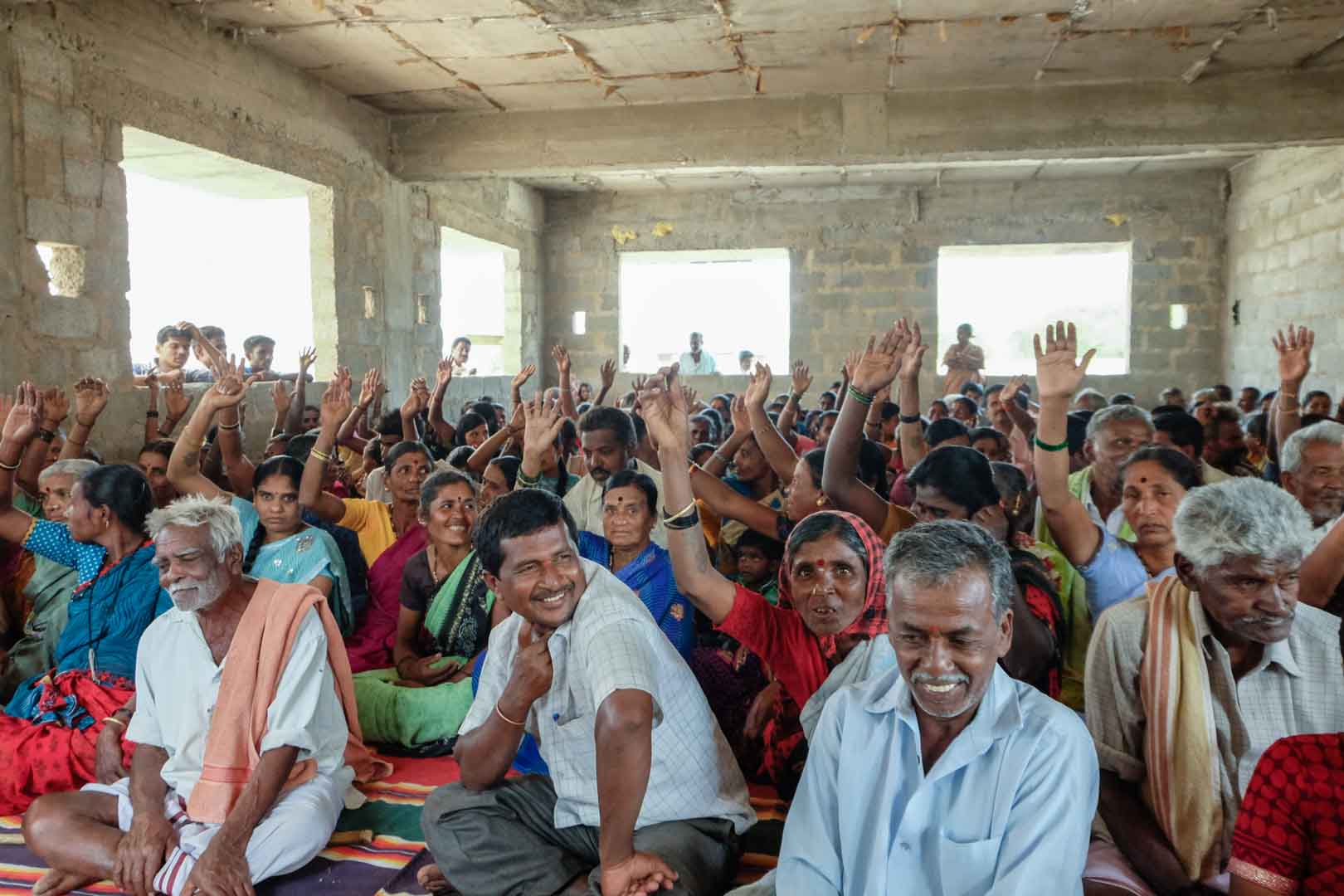Improved cookstoves, Klima-Kollekte, India
Klimaschutz und Armutsbekämpfung kennzeichnen die Projekte der Klima-Kollekte, die einen Beitrag zur Lebensverbesserung armer Haushalte leisten. Traditionell sind in Indien Frauen für den Haushalt und somit für die Zubereitung der Mahlzeiten zuständig. Für die Frauen in Visakhapatam wird das Kochen allerdings zunehmend beschwerlicher: Einerseits müssen sie lange Wanderungen auf sich nehmen, um Holz zu sammeln und andererseits sind die Frauen beim Kochen in den Hütten starkem Rauch ausgesetzt, der die Atemwege angreift und die Augen reizt. Deshalb fertigt die Partnerorganisation LAYA Ressource Centre 3.750 energiesparende Kochstellen aus Lehm in 109 Dörfern an. Diese verbrauchen 25 Prozent weniger Holz als traditionelle Öfen und können auch mit anderem Brennmaterial aus Biomasse beheizt werden.

According to a statistic from the World Health Organization (WHO, 2024) around a third of the global population still relies on unsafe and environmentally harmful cooking methods. This includes, for example, cooking over open fires or using polluting cooking fuels, such as coal or kerosene. Improved cookstoves tackle this problem by using thermal energy more efficiently.
Depending on the model, an improved cookstove can reduce fuel consumption by up to 70 percent, which significantly saves CO2 emissions and can lower the pressure on local forests as less firewood needs to be harvested.
Improved cookstove projects allow the distribution of the - often simple - devices made from metal or clay to households, small enterprises or community facilities. Especially for households, this has an impact beyond the CO2 reduction: better indoor air quality decreases respiratory diseases and families can save time and money as less fuel is needed. Improved cookstoves projects in the ClimatePartner portfolio are registered with international standards.
Explore our projects
Biochar for Climate Action, Healthy Soils, and Better Harvests

A certified climate project combined with additional commitment

Expansion of renewable energy generation in Asia

Ceramic water filters save CO2 and improve health

Improved cookstoves worldwide – for better health and cleaner air

A certified climate project combined with additional commitment

Powering access to renewable energy in Africa

A certified climate project combined with additional commitment

Restored ecosystems remove carbon

Turning degraded farmlands into healthy ecosystems

Improved cookstoves - better for health and the environment

